
1
Chapter 4. OOP Application
ITSS Java Programming
CAO Tuan-Dung, HUT

2
Inheritance
Mechanism to create new classes using existing classes
The existing class is called the parent class, or superclass,
or base class
The derived class is called the child class or subclass
As the name implies, the child inherits characteristics of the
parent
That is, the child class inherits the methods and data defined
by the parent class

3
Benefit of Inheritance
Reusability
Once a behavior (method) is defined in a super class,
that behavior is automatically inherited by all subclasses
Thus, you write a method only once and it can be used by
all subclasses.
Once a set of properties (fields) are defined in a super
class, the same set of properties are inherited by all
subclasses
A class and its children share common set of properties
A subclass only needs to implement the differences
between itself and the parent.

4
Inheritance
Superclass
Account
Superclass
Account
Sub-class IntegratedAccount
Basic function of Account
+
Class that defines original behavior
Class that defines basic
function of Account
All the behaviors of superclass(attribute,
operation, relation) are inherited to the
sub-class

5
Definition of sub-class
To derive a child class, we use the extends keyword.
Syntax:
[Modifier] class Sub-class_name extends SuperClass_name{
Definition of member variable to add
Method definition to add or redefine
}
// Account class (superclass)
class Account {
String name; //Account name
int balance; //Balance
void display(){…..}
// Display
}
// Integrated account class (sub-class)
class IntegratedAccount extends Account {
int limitOverdraft; //Borrowing amount limit
int overdraft; //Borrowing amount
void loan(int money){…} //Borrowing()
void display(){…..} // Display
}
IntegratedAccount obj= new IntegratedAccount();


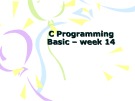
![Bài giảng Lập trình C cơ bản: Tuần 13 [Mới nhất]](https://cdn.tailieu.vn/images/document/thumbnail/2024/20240503/codabach1016/135x160/1511714732838.jpg)
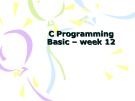
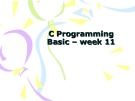
![Bài giảng Lập trình C cơ bản: Tuần 10 [Mới Nhất]](https://cdn.tailieu.vn/images/document/thumbnail/2024/20240503/codabach1016/135x160/9751714732844.jpg)

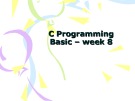
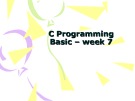
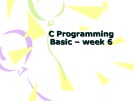








![Hệ thống quản lý cửa hàng bán thức ăn nhanh: Bài tập lớn [chuẩn nhất]](https://cdn.tailieu.vn/images/document/thumbnail/2025/20251112/nguyenhuan6724@gmail.com/135x160/54361762936114.jpg)
![Bộ câu hỏi trắc nghiệm Nhập môn Công nghệ phần mềm [mới nhất]](https://cdn.tailieu.vn/images/document/thumbnail/2025/20251111/nguyenhoangkhang07207@gmail.com/135x160/20831762916734.jpg)





